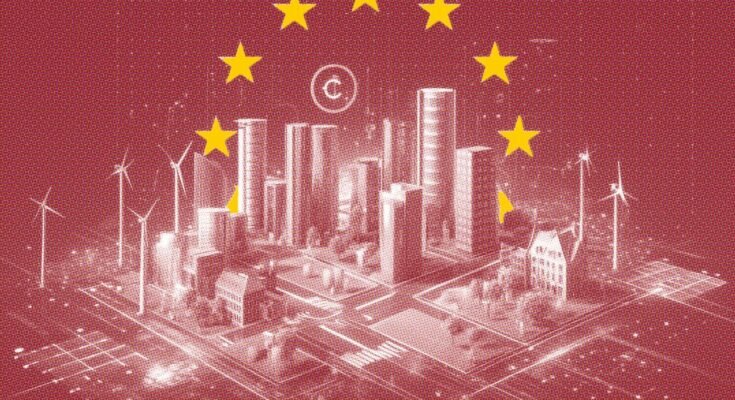Among the 10 leading smart cities in the world, as of 2024, seven were in Europe. That’s no coincidence.
The European Union puts a lot of resources into the data infrastructure that supports smart city initiatives, from urban mobility to low emission zones to IoT-backed tourism.
Specifically, the EU is working toward persistent, secure, and equitable ecosystems for the data that powers smart cities. In fact, the European strategy for data defines nine areas in which to pool equally accessible data: the Common European Data Spaces.
These shared data spaces will make valuable datasets equally available to authorized users in every EU member state. That requires interoperable standards for all data providers and data users.
In other words, data interoperability requires compliance with a common set of rules surrounding how you organize, store, and share data.
At the same time, the EU is working toward ambitious sustainability goals. To reach full EU compliance, smart city operators must consider both data governance and sustainable practices.
Luckily, the two topics overlap in key areas. Your data governance strategy can actually contribute to compliance with EU sustainability initiatives, too.
Here’s a quick look at the relationship between data governance and environmental sustainability in the context of EU compliance—followed by a solution that can help you comply with EU guidance in both areas.
The European digitization strategy is to create a single market for data—a shared information economy to match the EU’s broader partnership between member states.
While striving toward universal digital transformation, however, EU states are also enacting the European Green Deal. This transformational sustainability project aims for ambitious goals, including:
Smart city technologies can help meet Green Deal goals—but only if they’re built with sustainability in mind. After all, managing data consumes a lot of energy. Technology alone isn’t enough to offset this resource consumption; you also need a workable sustainability strategy.
Data governance includes your policies and standards about who owns data; who gets to make decisions about what to do with data; and what you can do with the data.
The systems you use to store, process, and share data can either reduce or increase your city’s carbon emissions.
As we’ve mentioned, however, sustainability is just one of the challenges European smart city implementers face. The other is integration and compliance with the European strategy for data—and its nine common data spaces.
A data space is a combination of two things: An IT infrastructure that pools data and provides secure access to all authorized users; and a set of data governance policies that determine who those authorized users are, and what they can do.
The purpose of the Common European Data Spaces is to share the power of large datasets among all member states. All participants can securely contribute to and draw from these data spaces.
Currently, the EU (plus a wide range of stakeholders, including municipal IoT managers) is building common data spaces in the following nine areas:
Strong Common Data Spaces in the areas of industry, Green Deal, mobility, energy, and agriculture can contribute to sustainability goals. By helping to build these data spaces, your smart city can offset some of your IoT emissions.
So what does it take to comply with EU plans for the Common European Data Spaces? Two related things: interoperability and standardization.
The European Commission’s technical guidance on interoperability for data spaces lists a few recommendations for IoT users. To build interoperable data systems, the Commission says, smart city operators should:
All of this may sound hopelessly complicated, but don’t be discouraged. As a smart city operator, you don’t have to build EU-compliant systems from scratch. In fact, all you really have to do is choose the right smart city IoT platform.
Both data governance and sustainability are crucial factors to consider when building or choosing an IoT data platform. Look for a comprehensive solution that stores, secures, and processes your IoT data while preserving interoperability with EU data spaces—a task that requires compliance with standards and regulations like those discussed above.
When you use a fully compliant smart city platform, you don’t have to worry about RESTful APIs, open specifications, or the latest recommendations from EIF4SCC or Interoperable Europe. Your platform partners do that for you.
Instead, you can focus on improving quality of life for your residents. Maybe that means creating low emission zones, reducing traffic by sharing data on road saturation, or creating a whole smart tourism system from scratch. Maybe it’s all three.
In any case, complying with EU interoperability standards—and sustainability rules—can help your smart city get a whole lot smarter, and all it takes is the right IoT platform.



